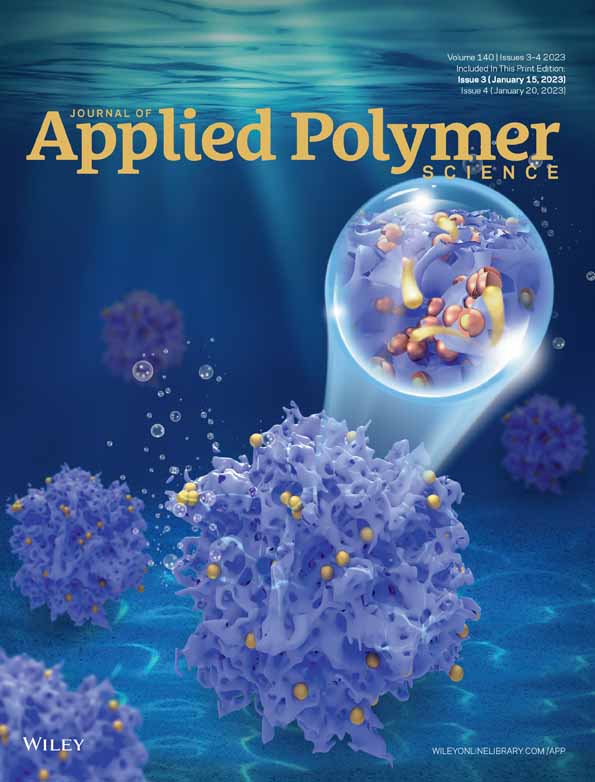Conductive double-network hydrogel for a highly conductive anti-fatigue flexible sensor
Funding information: Industry-University Research Cooperation Fund of Guangxi Jinding Furniture Group Co., Ltd & Guangxi University, Grant/Award Number: 20200820; National Natural Science Foundation of China, Grant/Award Numbers: 21878078, 22108022; Scientific Research and Technology Development Program of Guangxi, Grant/Award Number: FA2017005; Key R&D projects in Guangxi, Grant/Award Number: AB21196033
Abstract
Improving the mechanical properties of hydrogels is a prime example of their large-scale, diverse applications. Herein, we report a one-pot method for preparing a double network system hydrogel where the polyvinyl alcohol served as the first polymer backbone, acrylamide as the second network, and N, N′-Methylenebisacrylamide as the cross-linker, and the prepared hydrogels presented excellent mechanical properties with 1168% tensile strain and 598 kPa compressive strength. Through the metal–ligand bonds, an electrolyte solution containing Cu2+ was introduced into the hydrogel, which exhibits higher water retention than other electrolyte-containing hydrogels. Specially, the hydrogel was able to retain water for 8 h under extreme dry conditions at 60°C. The GF value was calculated to be 0.124 when the strain was 0%–64.2%. Furthermore, the hydrogel flexible sensor can detect changes in ambient temperature. When the ambient temperature rises, its relative resistance also tends to rise. In conclusion, this hydrogel sensor offers great potential applications in flexible sensors.
CONFLICT OF INTEREST
The authors declare no competing financial interest.
Open Research
DATA AVAILABILITY STATEMENT
Research data are not shared.




